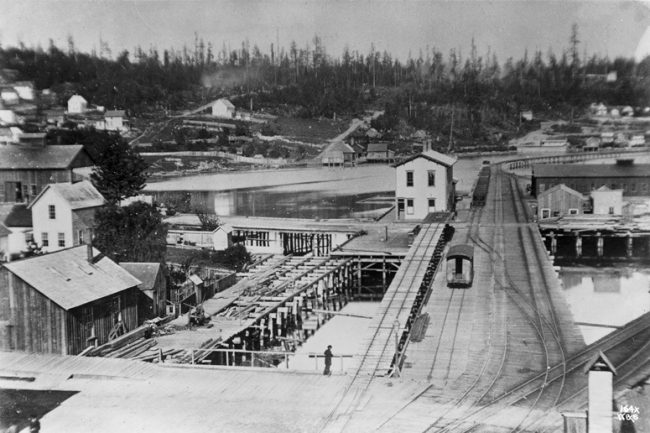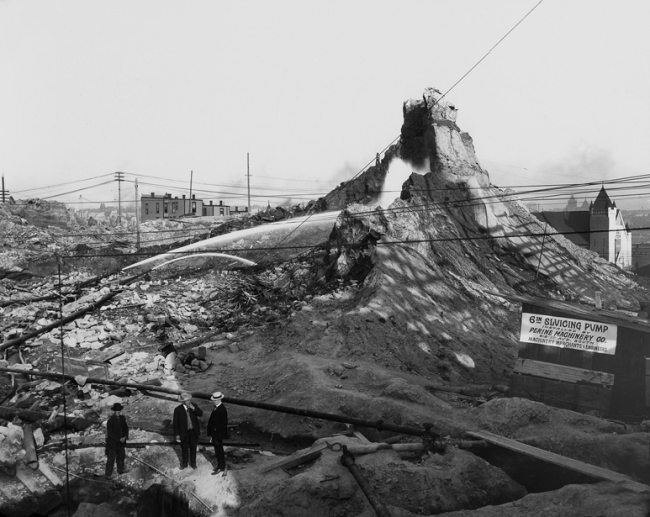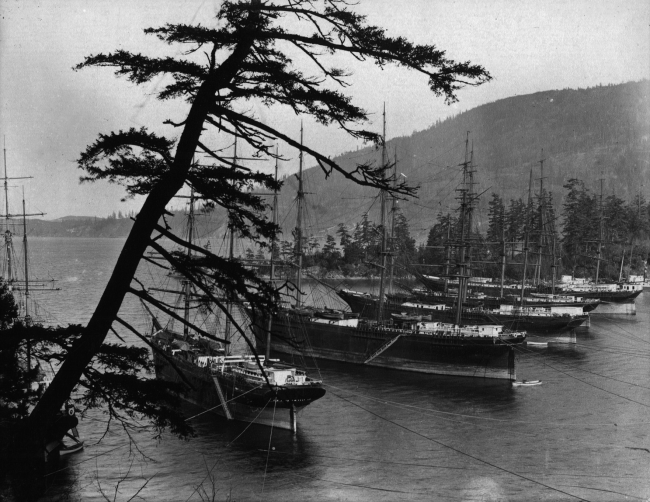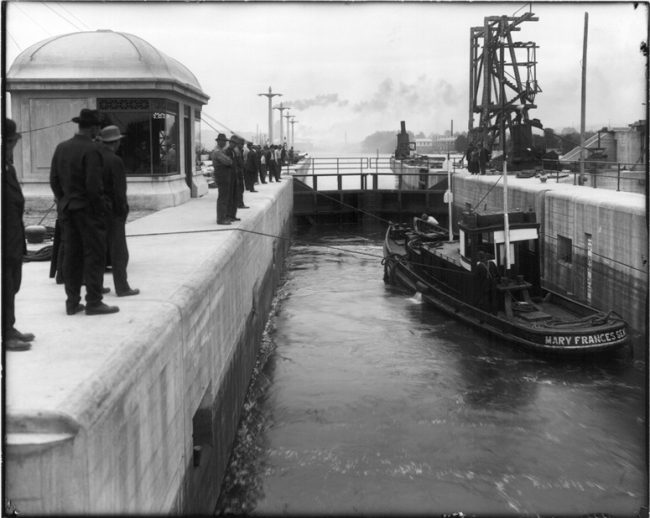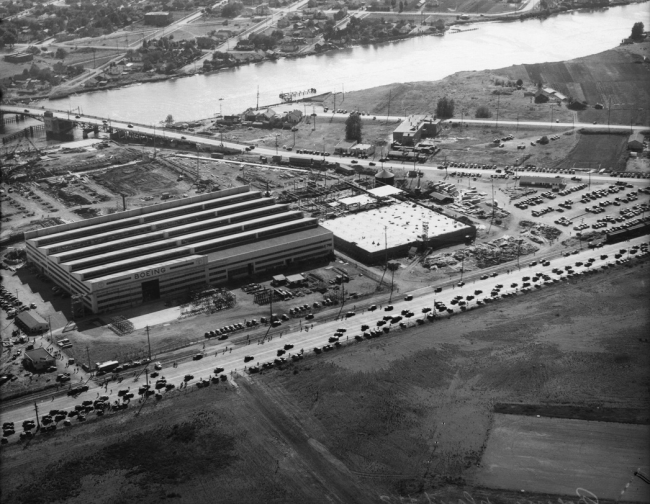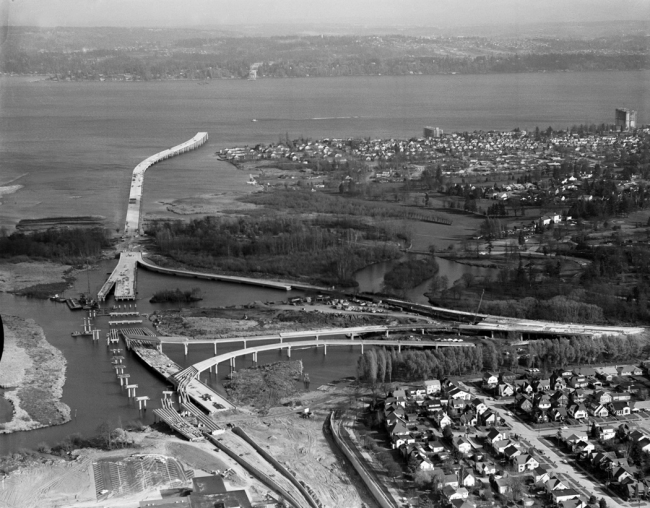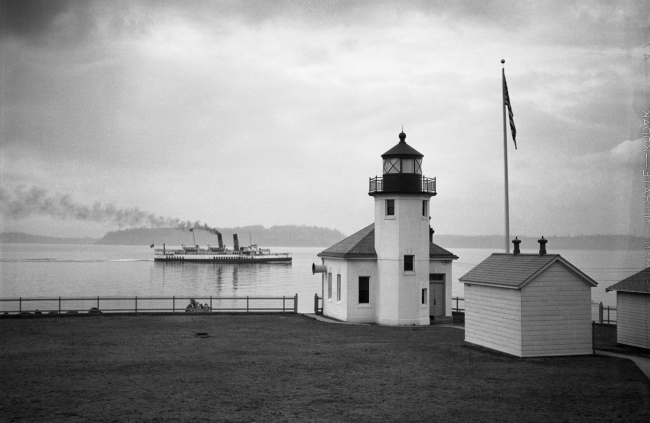Modern Puget Sound timeline
The Puget Sound region has a long history that has shaped the culture and environment we experience today. View a timeline describing key events in the Puget Sound region dating from Washington statehood to the present.

1889
Washington becomes a state. President Benjamin Harrison signed the bill admitting Washington to the union as the 42nd state on November 11, 1889.
1896
First salmon hatchery constructed. The first hatchery in Washington was built on the Kalama river. Hatcheries were originally constructed to make up for land use choices that altered fish habitat. Today there are 87 hatcheries operated by the Washington State Department of Fish and Wildlife, 51 tribal hatcheries, and 12 federal hatcheries. In addition to contributing to the state’s salmon harvest, hatcheries are now seen as a tool for rebuilding wild populations.
First agricultural irrigation system in the Dungeness valley.
1900
Port Blakely in Kitsap county has the largest lumber mills in the world. Technological advances such as the band saw and steam donkey boost lumber production. Founded in 1864 by Nova Scotia sea captain William Renton, the Port Blakely Mill burned down – and was rebuilt – twice in the span of twenty years.
1900-1910

Seattle population expands from 81,000 to 237,000 due to Alaska Gold Rush. The steamer Portland landed in Seattle in July of 1897, carrying over a ton of solid gold from the Klondike River. Seattle’s mayor, William D. Wood, resigned when he heard the news and traveled straight to Alaska. Prospectors from all over the country stopped in Seattle for supplies and transportation. From the Seattle Post-Intelligencer (October 13, 1897):
“Seattle is the best point in the world in which to secure an outfit for Alaska or the Klondike country. It is not a mushroom, milk-and-water town with only crude frontier ways: not a bit of it: it is a city of from 65,000 to 70,000 population, with big brick and stone business blocks and mercantile establishments that would be a credit to Chicago, New York, or Boston: it has paved streets, an unrivaled system of street cars--electric and cable--electric lights, several transcontinental railroads and a harbor unequaled in America.” 1
1900-1920
Several major dams constructed on the Cedar, Nisqually, White, Elwha and other rivers for urban water supplies and to power mills. The Elwha River Dam was completed in 1914. Measuring 105 feet, it created the 2.5 mile long Lake Aldwell reservoir. By building a hatchery, the project owner avoided the law that required fish ladders as part of the dam – but the hatchery closed in 1922. The dam, and the Glines Canyon Dam above it (constructed in 1925), were a significant source of power at the time of their construction. However, explosives used for construction irrevocably altered the canyon, and the dams greatly decreased the quality of habitat for spawning salmon. The reservoirs also flooded riparian and wetland habitat and covered over sacred and historical tribal sites.2
White, Cedar and Black rivers re-routed. Prior to construction of the Ship Canal, Lake Washington drained into the Black River. Between 1912 and 1917, the Cedar River, which joined with the Black River downstream of the Lake, was re-routed into Lake Washington, and the construction of the Ship Canal caused the Black River to dry up completely.

1903-1911
Peak period of the Denny Regrade: 16 million cubic yards were removed from Seattle hills, mostly by water blasting. About half of the spoils were deposited in the tideflats, forming Harbor Island. The project of erasing Denny Hill, a steep rise that engineer Reginald Heber Thomson believed was preventing the city from expanding northward, took over five years. Some property owners were reluctant to let go of their claims, but they found their houses stranded when Thomson simply carved away the land around unsold lots.
At the time, Harbor Island (completed in 1909) was the largest artificial island in the world.3
1906
Construction begins on Puyallup river levees. In order to protect agricultural fields from flooding, levees were added to the banks of the Puyallup river, eventually extending 90 miles into the Puyallup River system (including the Carbon and White rivers).

1913
Peak cannery pack in Puget Sound with 2,583,463 cases of Pacific salmon.
1913-27
Puget Sound salmon hatcheries import eggs from the Columbia River.
1916
Ballard Locks completed, dropping level of Lake Washington by approximately 9 feet and eliminating substantial marsh habitat.

1916-18
Puget Sound Naval Shipyard undertakes major production of military ships during WWI.

1917
Boeing Airplane Company is incorporated. William Boeing moved to the West Coast as a 22-year-old engineering graduate of Yale. His fascination with airplanes and flight led him to collaborate with George Conrad Westervelt, and together they designed the B&W biplane. In 1916, Boeing incorporated his company as the Pacific Aero Products Co., then changed the name to the Boeing Airplane Company the following year.
“We are trustees of a veritable revolution that is taking place once more in the economic, social, and political fabric with the advent of this new speed medium.”
-- William Boeing4
1920s
Highway 101 constructed along the west side of Hood Canal, crossing all major river deltas.
Dams built on Skokomish and Skagit systems.
1924
Manila clams introduced with shipments of Pacific oyster seed. These clams have acclimated to Puget Sound since their introduction from Japan, and are now commonly farmed and eaten all over the Northwest.
1926
All time peak of Washington lumber production at 7.5 billion board feet.
1927-57
One hatchery in the Green River is the source for 67.7% of Chinook releases throughout Puget Sound.
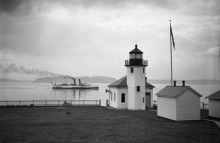
1941
Spartina alterniflora intentionally planted in Padilla Bay by a hunting club. Smooth cordgrass (Spartina alterniflora), is native to the Atlantic and Gulf Coasts, but was planted in Padilla Bay by the Dike Island Gun Club. Inventories in the 1980s and 90s documented the spread of cordgrass in the bay, and control efforts have ranged from treatment with herbicides to mowing and integrated weed management.5
1942-45
Puget Sound is major center for manufacturing and military staging during WWII.

1945-60
Major expansion of transportation infrastructure in Puget Sound including Interstate 5.
1950s
Recreational fisheries expand following WWII. Recreational catch of Chinook in Puget Sound in 1957 estimated at 238,000.
Cold War era boosts Boeing production.
First oil refinery built on Puget Sound.
According to a federal report, Puget Sound is the sixth most polluted area in the country.
1960s
Flooding leads to expansion of levee systems along Cedar, Sammamish and other rivers.
1962
Howard Hanson Dam constructed on the Green River.
1968
Sewage effluent entering Lake Washington, once estimated at 20 million gallons per day, is diverted to Puget Sound.
1970s
Peak contaminant levels in Puget Sound sediments. The manufacture of PCBs and several other toxic contaminants are banned nationally.
Construction of numerous bulkheads, docks, piers and revetments along central Puget Sound basin.
1971
Shoreline Management Act is approved. The goal of the Act is “to prevent the inherent harm in an uncoordinated and piecemeal development of the state’s shorelines.” Every city and county encompassing streams, rivers and lakes fitting specific size criteria or any portion of the state’s marine waters is required to develop a Shoreline Master Program (SMP) integrating state laws with the needs of the community.6
1974
Boldt Decision determines that treaty tribes in WA reserved the right to harvest up to 50% of the salmon catch. This landmark decision – an emotional court ruling with long-lasting repercussions – stated that tribes in Washington State, who had signed treaties in the 1800s with the U.S. government regarding their right to fish, were entitled to half the state’s salmon harvest. White commercial fishermen argued that the Native Americans were the cause of declining salmon runs, even as the commercial fishing industry grew, forcing native fishermen out of areas they had fished for decades. Conflicts which became increasingly more violent led the government to file suit against the state on behalf of the tribes. Boldt’s 203-page ruling, which gave the tribes an entirely new political status, was heavily challenged but still stands.7
1977
Seattle is the second busiest container port in the U.S. and sixth busiest in the world.
1981
Industry giant IBM selects tiny Microsoft’s MS-DOS as the operating system for their new personal computer.
1985
Pacific Salmon Treaty signed with Canada. Among other things, the treaty tried to limit harvest of Fraser River fish in the US and Columbia River fish in Canada and Alaska. Sharing the harvest equitably and conserving salmon populations were the two major goals of the agreement, which went through several iterations before being ratified in 1985. The treaty created the Pacific Salmon Commission to oversee management of fish stocks and harvest.8
1999
Endangered Species Act listing of Puget Sound Chinook is the first major listing affecting an urban area. Draft recovery plan completed in 2005.
2000
Human population of Puget Sound estimated at 3.8 million.
2005
Southern resident orca population listed as endangered.
2020
An additional 1.4 million residents expected, bringing the combined total of Puget Sound and the Georgia Basin to over 7 million.
References
1http://www.nps.gov/nr/twhp/wwwlps/lessons/55klondike/55facts3.htm
2http://www.nps.gov/olym/learn/historyculture/history-of-the-elwha-overview.htm
3Seattle Neighborhoods: Belltown-Denny Regrade
4http://www.boeing.com/history/narrative/n003boe.html
5http://www.padillabay.gov/pdfs/non-native.pdf
6http://www.ecy.wa.gov/programs/sea/sma/st_guide/intro.html
7http://kohary.com/env/bill_020799.html
8http://www.nwcouncil.org/history/pacificsalmontreaty.asp


